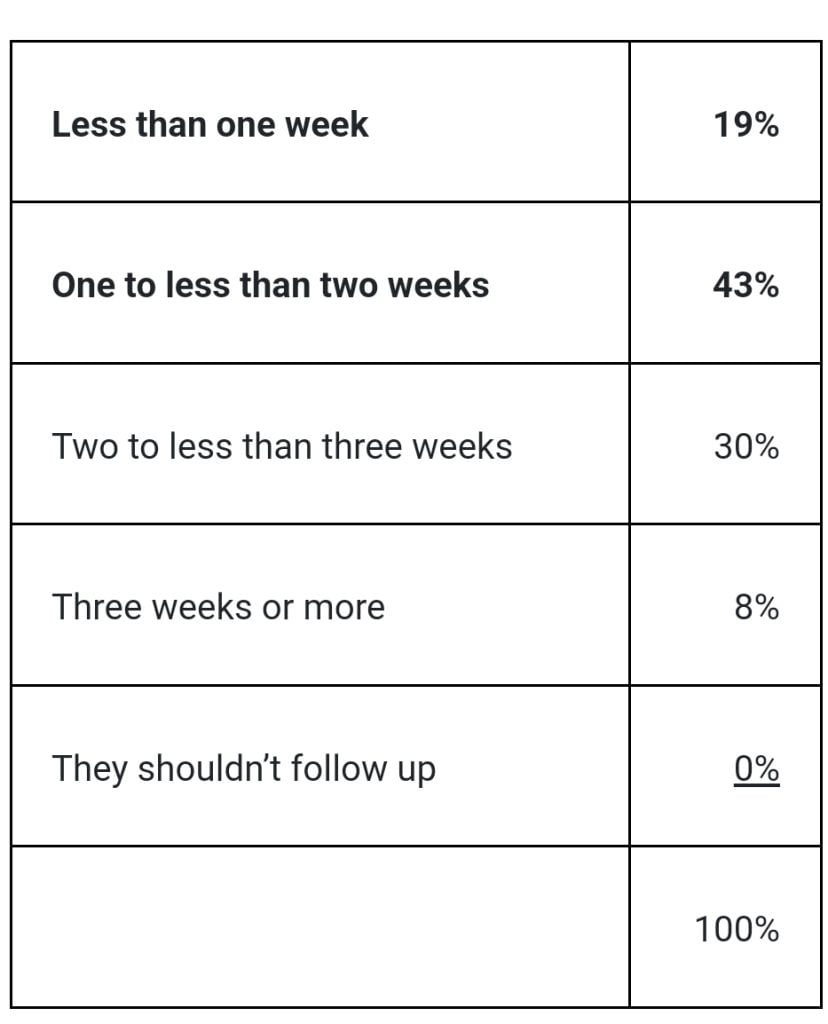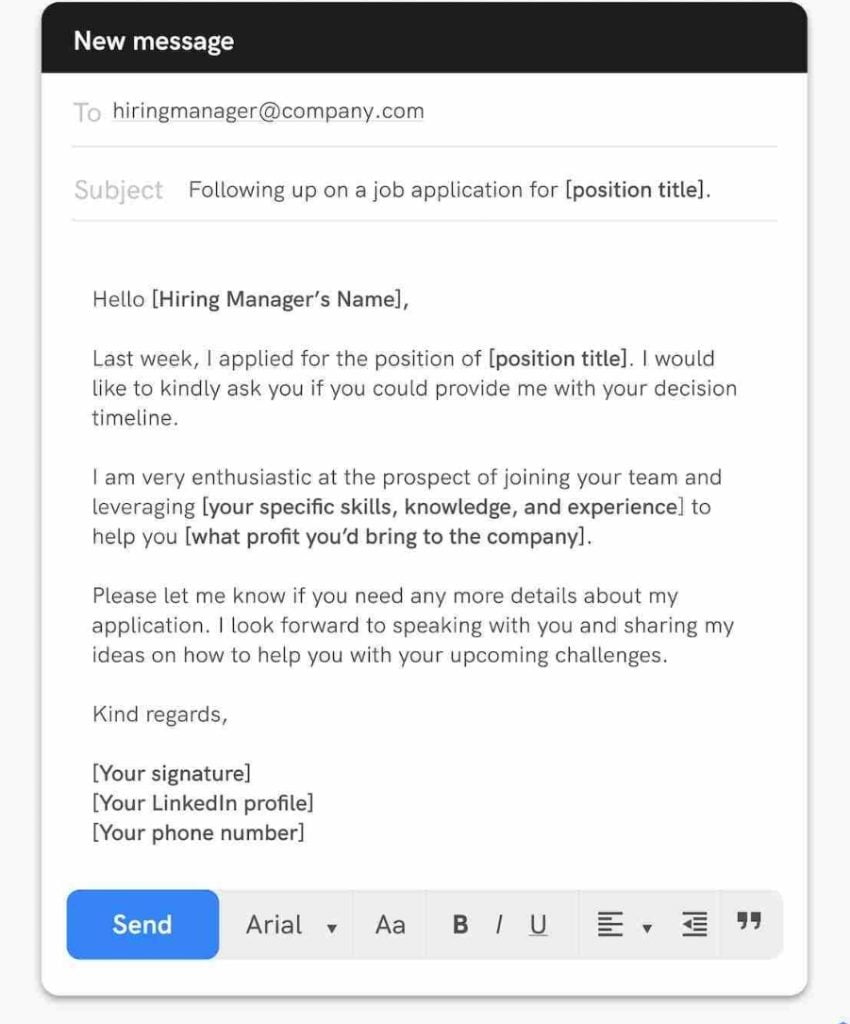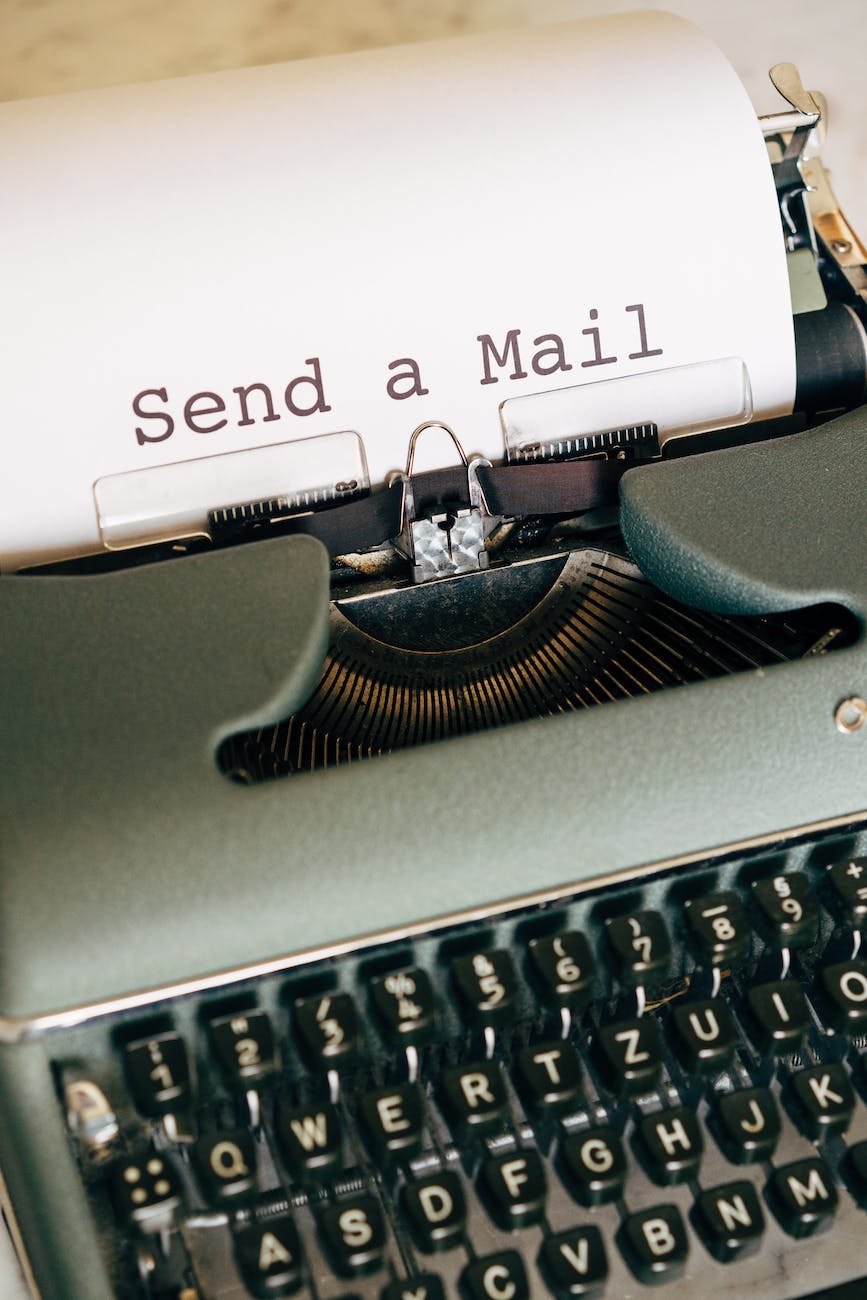The process of applying for a job or waiting for a response can be tedious and tiring. It is normal to have that feeling of desperation and doubt after submitting an application letter for a job position and not getting a response in time.
When you apply for a job be sure to submit a well-detailed resume and an application letter to stand a chance of getting the position you applied for, and also wait for like a week before considering sending a follow-up email or emails. It is important to know that the process can take some time, and sometimes employers might also need a little push to pass the process along, this is where follow-up emails come in.
Sending Follow-Up Emails
When you send a follow-up email to an employer or hiring agent, it shows your interest in the job position and can help fasten the process and keep you in the mind of the employer.
However, it’s important to approach the follow-up email strategically to avoid pushing beyond limit and annoying your employer.
Remember to wait for an appropriate amount of time, before you send emails,ou don’t want to send a follow-up email too soon and become to pusy and impatient, but you also don’t want to wait too long and get overtaken by other applicants and risk the employer forgetting about your application. A week’s wait will be appropriate.
A study has shown the appropriate time to wait before following up on a job application, and also do well to wait another one to two weeks to receive feedback from your employer after sending an email before otherwise.

Step To Writing Effective Follow-Up Emails
1: Address the email to the right person
Writing a follow up email, be sure to address it to the right person. it is ideal to have or collect the contact information of your employer or hiring agent. You can also carry out some research on the company’s website to see if you can find the contact of the employer or hiring agent. In doing so, It shows how serious you are which the employer can tell after receiving your mail.
2: Keep the email short and to the point
Employers can be pretty busy, and might not have time to read a long, rambling email, so it’s always best to keep it short and simple.
3: Proofread and edit the email carefully
Before sending any email you should make sure to proofread and edit it carefully. A poorly written email with typos and grammatical errors can give a bad impression. You can use a grammar checker to catch any errors and read the email out loud to make sure it flows well.
4: Be professional and polite
Finally, it’s important to maintain a professional and polite tone throughout the email. Avoid using any slang or being too casual, be careful with words, and do not make demands. Remember that you’re asking for a favor from the employer, so be polite and respectful in your request.
How To Send Effective Follow-Up Emails
- Use a clear subject line, for example: Following up on a job application for [position title].
- Be polite and humble in the body of your message.
- Say you’re still interested and reiterate why you’re the perfect fit.
- Keep the resume follow-up email short.
Example:

Summary
Start by thanking the employer for considering your application, and then politely ask for an update on the status of your application. You can also mention any additional qualifications or experience you have that you didn’t include in your initial application.
